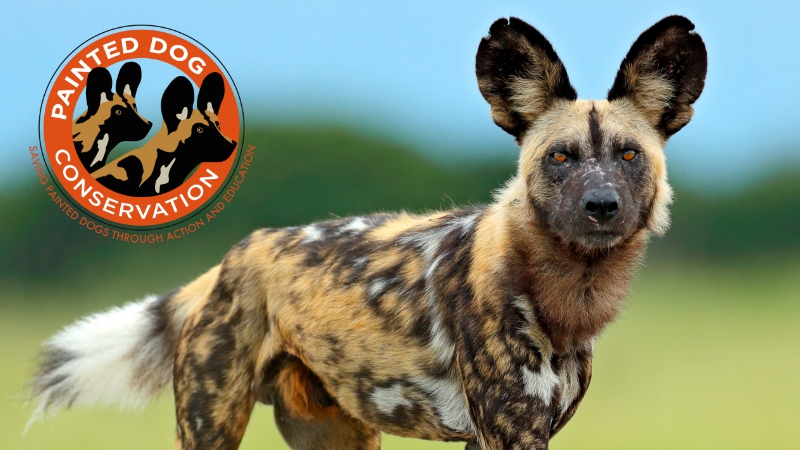Project: Anti-poaching support, Painted Dog Conservation, Zimbabwe
Donated: US$ 10,000
More info: painteddog.org

According to statistics published by the IUCN, fewer than 1,500 mature painted dogs remain across the entire continent of Africa. Total numbers are believed to be closer to 6000. They may not be as famous as their trunked, horned, or maned neighbours, but these painted dogs —also known as African wild or hunting dogs—are beautiful, unique, and fascinating social animals.
Painted dogs are native to Africa, and aren’t found in the wild anywhere else on the planet. They live in small pockets across a handful of countries including Zimbabwe, the home of Painted Dog Conservation (PDC), where there are roughly 700 painted dogs.
Explorers Against Extinction supported the work of PDC anti poaching units in and around Hwange National Park in Zimbabwe through its 2019 campaign.
The decline in the African Wild Dog population can be attributed to human encroachment on their habitat – wild dogs are extremely sensitive to habitat fragmentation as a consequence of wide-ranging behaviour, conflict with livestock and game farmers, accidental killing by people in snares and road accidents, and infectious disease.
Who are Painted Dog Conservation?
PDC, a not for profit organisation, works to safeguard the African Wild Dog —they do through this conservation, education, and outreach programs. PDC employ over 60 people from the local villages to run their conservation programs and education/outreach programs.These efforts span everything from an Anti-Poaching Unit which patrols local areas daily to provide a direct form of protection for six packs of dogs to a Rehabilitation Facility where they treat injured and orphaned dogs before returning them to the wild.

The work of the anti poaching units is extensive:
– Daily anti-poaching patrols throughout the Gwayi Conservancy and buffer zones surrounding Hwange National Park
– Tracking with specialist K9 team (dog detection unit)
– Anti-poaching patrols within Hwange National Park completed jointly with Hwange National Park teams
– Locating and dismantling snares set for wildlife in the bush
– Treating and freeing trapped animals whenever possible
– Analysing information reported by the Anti-Poaching Units to identify and monitor poaching hot spots
– Developing a network of informants
Poaching
Poaching presents a huge threat to not only painted dogs but also other wildlife in the so-called ‘buffer zone’ surrounding Hwange National Park in Zimbabwe. Large predators such as lion and hyena are also particularly vulnerable as they
often scavenge from snare lines and indeed can be targeted deliberately.
Pressures that drive poaching are escalating in Zimbabwe. Unemployment and erratic rainfall due to climate chance have led some to turn to illegal hunting practises. A notable increase in poaching of elephant has been seen in recent years and is directly attributed to this. The recent increase in the use of poisons such as cyanide further complicates the issue and there is dire need for a reliable informant network to be established.
Since the inception of PDC’s anti-poaching patrols in 2001, over 30,000 snares have been recovered. Based on recent activity levels, PDC estimate the total number of snares to be confiscated during the 2019-2020 period will be approximately 3,000. PDC has four reliable informants and their assistance has resulted in the arrest of 16 poachers. They have also strengthened their partnership with the local authorities to try and ensure that poachers are convicted.
Local artists at the Iganyana Arts Centre use the snare wire collected by the anti-poaching units to create impressive, distinctive wire animal sculptures. Production of this artwork provides skills and financial security for the artists, with cascading positive impact on the economic health of the local community (mitigating the economic incentives for poaching).



Leave a Reply